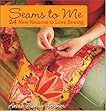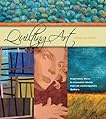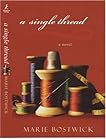OH MY GOODNESS! You would not believe what happened to me on Friday morning. I was sitting at my DH’s computer (my laptop is dead), watching a Quilt Out Loud episode (Yes, I did find my login and password) and avoiding preparing the taxes.
The doorbell rang and I thought “who the heck is at our door midmorning?” People don’t generally come to visit us unexpectedly. Most of the people who come to visit just walk in while shouting “Haaaalllooooo!” The other group that routinely knocks are The Child’s friends. Kids are all in school (or should be!) at the time, so I knew it had to be a door-to-door sales person or a delivery. I couldn’t remember ordering anything and we don’t encourage people to send us things unsolicited to our house. I am not big on surprises, in general.
My best guess: door-to-door sales person. I hunkered down by the computer not wanting to be the one who gave the bad news that we wouldn’t be buying the new latest and greatest home security alarm system-vacuum cleaner combo today. Without me even saying anything or the doorbell ringing a second time DH ran down the stairs, and opened the door. I heard a brief chat with the person and the door close.
Hhhmm. I was almost home free. Next I heard steps coming toward the laundry room (where the boy computers live). Uh-oh.
It was a package. A relatively large bulky package. My darling sister has been sending us weird things that she thinks we need (Waterpik showerhead last week) so whether she had sent us something was his first question. I looked at the label and it was addressed to me at Artquiltmaker Blog and was from someone I didn’t know.
Huh? I don’t really make a business of my blog at the moment, except for the Amazon thing (which is slow so far), so I handed it back to DH who proceeded to open the package. He is good that way. He was pretty excited. I was excited, too, but more cautious than excited. I work in an environment where getting something for ‘free’ means that you are usually giving something (often large sums of money) away.
Out popped two books and a very nice letter from Ray Hemachandra of Lark Books. Yes, THE LARK BOOKS!!!! The Publisher lark Books!!!! A Publisher sent ME something to my little corner of the country.

As the above was happening, which took a few minutes at most, I felt confused. I did not order books from Lark Books (remember I hadn’t read the letter yet) and one of them was probably one I wouldn’t order without getting it from the Library first. The art quilt book has been showing up in my Amazon recommendations, but I hadn’t really tried to find it at the library yet so I could take a look. I thought it might be a repeat of the same old art quilts and it wasn’t a high priority….blah blah blah.
WRONG!
WRONG!
WRONG!
Part of the letter says:
“I am pleased to submit for your consideration two fantastic Lark Crafts quilt titles…”
and
“I hope you enjoy the books. Please contact me if you any questions at all. I’d also appreciate being sent notification of any blog or website posting, a copy of your publication or a tear sheet (no idea what that is), if you choose to review any of the books…”
I will do full reviews (of course, I will! They sent me FREE books! Why wouldn’t I??? I want to encourage more of the same), but first impressions are:
Pretty Little Quilts: great colors, different sorts of designs, interesting shapes, embellishment. I have to read the intro to see what the intent of this title is, but first glances tell me that Lark was thinking of smart quiltmakers. Yes, there are patterns, but again they don’t seem to be the same old pattern thing. There is beading included, hexagons with holes in the design, different types of thread work, etc.
500 Art Quilts: AWESOME format! No patterns. When I saw it on Amazon, I thought it would include some more views of the seminal art quilts that I have seen over and over in other books such as Masters: Art Quilts: Major Works by Leading Artists or the book, The Art Quilt, by Robert Shaw. Nope. Wrong again. The quilts pictured look like quilts I haven’t seen before. There are some Name Quilters in it, but showing recent work. I also saw a lot of names I didn’t recognize and even a quilt from 2008. Again, I will do a more formal review soon-ish, but I am looking forward to getting more in depth with these books.
I know there has been much more squealing, yelling and excitement in this post than normal. It is so great to get a good surprise like this!
THANKS, LARK BOOKS!!!!














